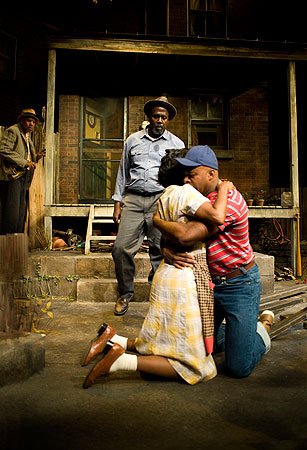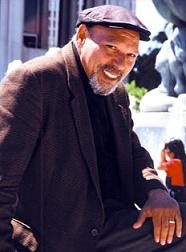 I think that it's time for part three of our study guide!
I think that it's time for part three of our study guide! Monday's presentations were as follows:
Grant's presentation on Jules Verne, focusing on Twenty Thousand Leagues Under the Sea
Ismail's presentation applying Erikson's theory of development to Death of a Salesman
Pamela's presentation on Cuban poet and painter Armando Vallardes
Inhae's presentation on the Brothers Grimm
Liliana's presentation on Nobel prize winner Mario Vargas Llosa
The picture below is of Vargas Llosa with his first wife, Julia.
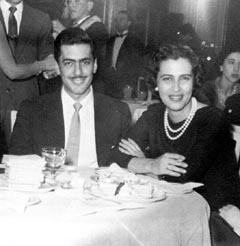 We also discussed the ballad, a form present in both poetry and song.
We also discussed the ballad, a form present in both poetry and song.Here are a few more links for you:
In the 1960s, Simon and Garfunkel put E.A. Robinson's poem "Richard Cory" to music. Here is a link to the poem although it is in our anthology:
Ballad: a relatively short narrative poem, written to be sung, with a simple and dramatic action. The ballads tell of love, death, the supernatural, or a combination of these. Two characteristics of the ballad are incremental repetition and the ballad stanza. Incremental repetition repeats one or more lines with small but significant variations that advance the action. The ballad stanza is four lines; commonly, the first and third lines contain four feet or accents, the second and fourth lines contain three feet. Ballads often open abruptly, present brief descriptions, and use concise dialogue.The folk ballad is usually anonymous and the presentation impersonal. The literary ballad deliberately imitates the form and spirit of a folk ballad. The Romantic poets were attracted to this form, as Longfellow with "The Wreck of the Hesperus," Coleridge with the "Rime of the Ancient Mariner" (which is longer and more elaborate than the folk balad) and Keats with "La Belle Dame sans Merci" (which more closely resembles the folk ballad).
 Tuesday we saw the following presentations: Hubert's presentation on Dmitri Shostakovich's Fifth Symphony, Wajiha & Jonathan's presentation on Eminem's "Mockingbird," Aurelie's presentation on Victor Hugo's "Demain des l'Aube," and Dexter's presentation on the Beijing production of Death of a Salesman.
Tuesday we saw the following presentations: Hubert's presentation on Dmitri Shostakovich's Fifth Symphony, Wajiha & Jonathan's presentation on Eminem's "Mockingbird," Aurelie's presentation on Victor Hugo's "Demain des l'Aube," and Dexter's presentation on the Beijing production of Death of a Salesman. 

We looked at some other forms of poetry. The first is the tanka or waka, a very concise form from Japanese literature. It is actually quite old, dating from the 700s CE (or the 8th Century), and one of its leading lights was a woman, Ono no Komachi who lived during the 9th Century. At that time, upper-class Japanese women were encouraged to pursue literature in Japanese. The men, on the other hand, read and wrote Chinese. Here is the link we looked at:
http://www.gotterdammerung.
Her picture is above. She commonly appears in Japanese prints as an archetypal poetess and seductive woman.
One poem was translated by Arthur Waley, a noted translator from the early 20th century. Two were translated by Jane Hirschfield, an American poet, and Aratani Mariko, a Japanese poet.
The second is the bop, a new form developed by African-American poet Afaa M. Weaver.
http://www.poets.org/
http://www.poets.org/
Scroll down this link to find another example of the bop poem:
http://jstheater.blogspot.com/
I've also attached Evelyn N. Alfred's bop poem, "flashes: a bop for bix b." Enjoy!
We listened to another one of Afaa M. Weaver's poems. This one is not a bop, and it takes place in Taiwan:
http://www.poets.org/
The picture below is of Taipei's most famous "night market."
 We finished up with the following presentations:
We finished up with the following presentations:Joe & Lizzy on 1950s pop culture
Nahom on the American Dream & Death of a Salesman
Clifford on music as literature
Karen, Shennekia, & Jason on song lyrics as poetry
You may also watch Mauricio's video on Cesar Vallejo, the Peruvian poet, here:
Thanks for a great semester!





Attachment: flashes.docx

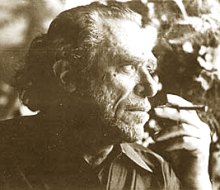








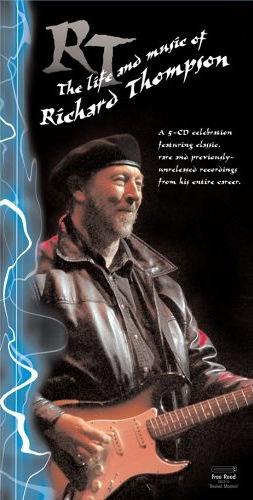



 This study guide for the final will begin with F.W. Murnau's 1922 version of Nosferatu, an example of silent film and German Expressionism. Below are links to YouTube versions of this film:
This study guide for the final will begin with F.W. Murnau's 1922 version of Nosferatu, an example of silent film and German Expressionism. Below are links to YouTube versions of this film:

 Here is a little benna for you:
Here is a little benna for you:












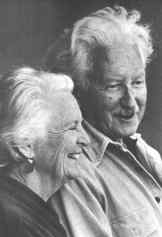



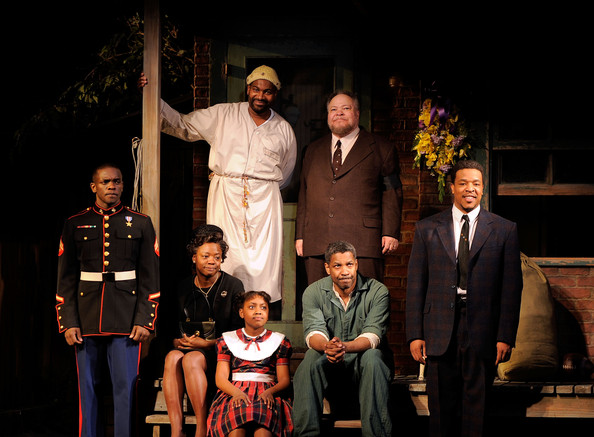 Above is a picture of the 2010 Broadway cast of Fences. You may notice Denzel Washington as Troy.
Above is a picture of the 2010 Broadway cast of Fences. You may notice Denzel Washington as Troy.




